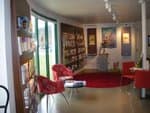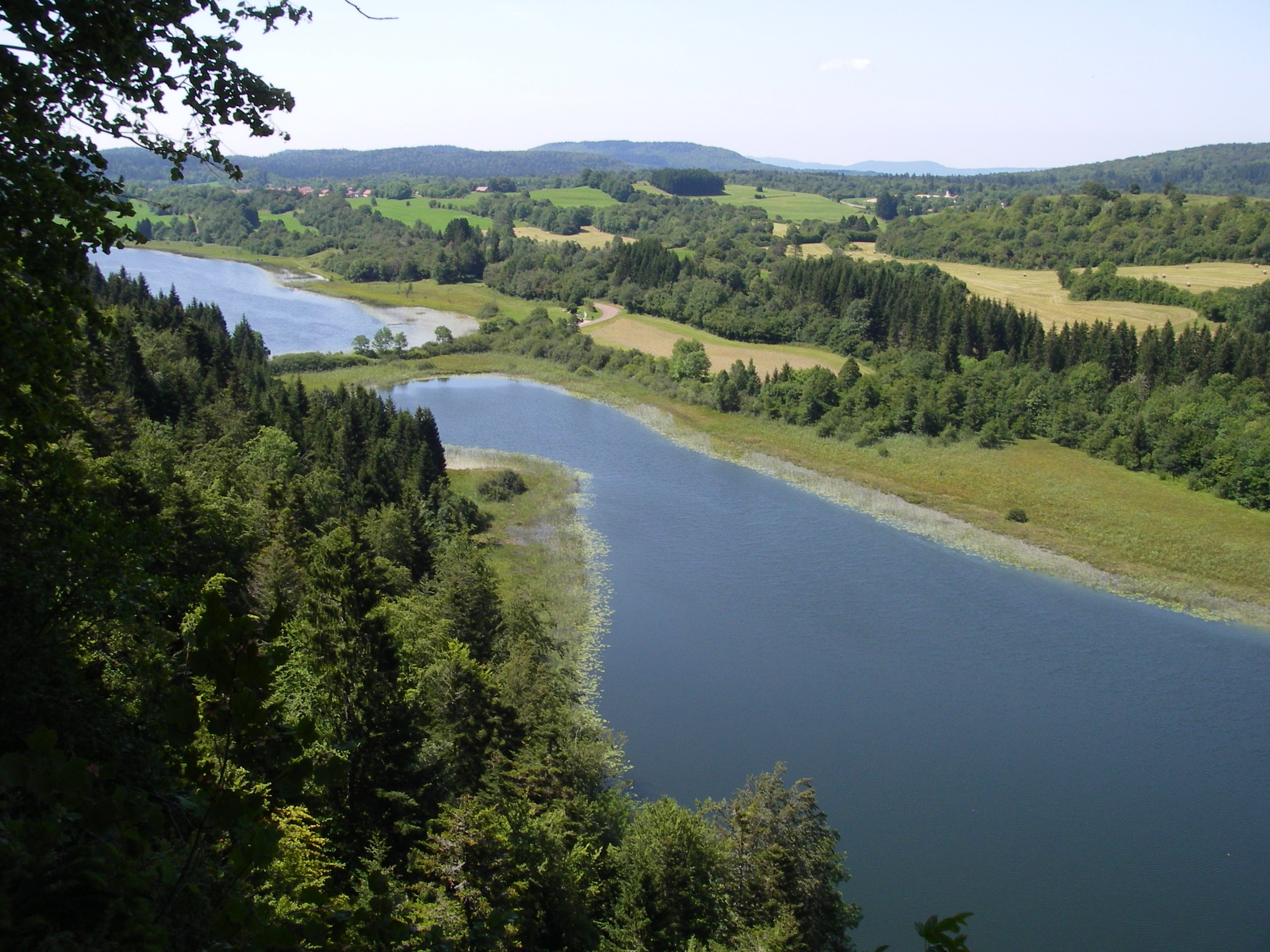
The lakes of Étival
"Every summer, from 1884, the family meets at Étival (…). From the terrace behind the house, the view looks over a vast patchwork of pastures scattered with livestock and cultivated fields. Beyond, the reassuring horizon of the Jura, covered with beech and fir woods, where bluish greys and mauves turn to gold in the setting sun. Ox teams pulling hay or lumber* bring this environment to life." Jean Challié; Laurence Buffet – Challié
Lumber*: freshly cut and debranched fir trees
5 points of interest
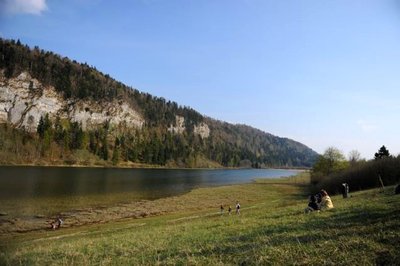
Site sonore - Bertrand Picault Acoustic siteEchoes on the lake
All sounds can be found in nature. In these limestone reliefs, the tiniest vibration rings out: here acoustic sites are common, so open your ears to hear the surprising concerto offered by the Jura’s landscapes. Any sounds made in this pretty combe are amplified by the cliff, and especially by the lake. This site offering a single echo provides both a quality landscape and quality acoustics. For this reason, the site is used for cultural events.
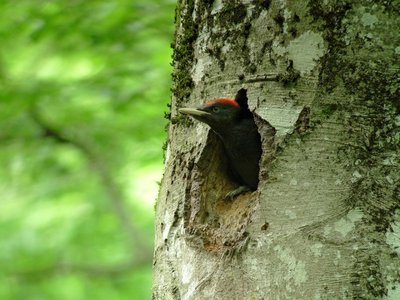
Pic noir - Fabrice Croset FaunaThe black woodpecker
The black woodpecker, with a red crown, is the largest woodpecker in Europe and is roughly the size of a carrion crow, which is also black. In spring, it is easily recognisable due to the loud “kree-kree-kree” call that it makes whilst in flight. It chips large oval nesting chambers into trees, often beech trees, which can then be used by the boreal owl the following year.
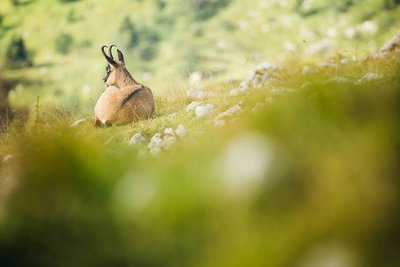
Chamois pelage d'été - PNRHJ / Léo Poudré FaunaThe Chamois: A fleece for every season
The chamois’ coat varies with the seasons; in winter, its fleece takes on a dark brown to black tint, which allows it to absorb heat; whilst in summer, its coat is beige or light brown. But it’s not only its colour that changes! In winter, its coat becomes thicker in order to protect it from the cold, and it can reach up to 10 to 12 cm thick, compared with only 3 to 4 cm thick in the summer, after it has moulted.
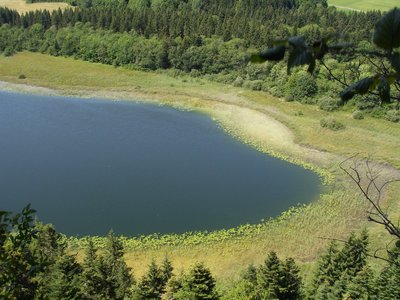
Vue depuis le belvédère - PNRHJ / François Bailly-Maître ViewpointBelvedere of the Étival lakes
The belvedere looks over the two wild and preserved lakes that span the bottom of the dale. The glaciers that covered the Jura during the last glacial period disappeared around 18,000 years ago. Their weight and movement created depressions of varying depths which, when the glaciers melted, and thanks to glacial moraines, filled with water and formed lakes.
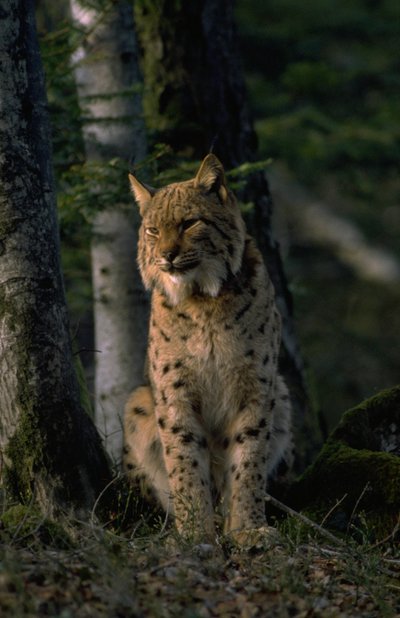
Lynx boréal - PNRHJ / Claude Le Pennec FaunaThe Eurasian lynx, an emblematic animal of the Jura mountains
This large and tall feline is elegant and mysterious. Its coat varies from beige to red with black spots, its head is round, and its ears are decorated by wisps of black fur. If all else fails, its short black tail leaves no margin for error should you have the luck of seeing this creature on one of its stops. The Eurasian lynx is capable of reaching speeds of 60 km/h when running!
Description
From ETIVAL – THE LAKES, follow the road (yellow waymarking) that cuts between the two Lakes to reach The top of the Lakes. Continue to the right, heading past and along the Great Lake (peat bogs south of the lake) to join up with a forest path at the A Tout Fromant crossroads.
To the left, the forest path will lead you to the Chemin du Calvaire (waterfalls). Then climb up the path to your left, that leads to the ridge at La Sea.
The path continues along the wooded ridge to the left, from which you can make out the discrete lake of la Fauge to the right in its combe. Head to L’Espinois, on the edge of the forest road.
Head back up the ridge to the left and follow the gravel trail. Using this trail, join up with the road (a steep descent on a narrow trail through the trees) and reach the BELVEDERE OF THE ETIVAL LAKES.
Follow the forest path to the north, leading to Sur les Lacs. Continuing in the same direction, gradually head down through the forest (the path is muddy in some areas) to reach the D 308 in Champs Gadout.
Take the road to the left for 200 m, then branch off to the left and follow along the forest edge (wet path) before following along the bank of the small Etival lake and returning to your starting point.
- Departure : Parking along the "route des lacs" in Étival
- Arrival : Parking along the "route des lacs" in Étival
- Towns crossed : Etival and Chatel-De-Joux
Forecast
Recommandations
This trail uses forest paths. To respect the owners and farmers granting you passage, and for the security of livestock and wild fauna, we ask that you remain on the waymarked paths.
Please keep your dog on a lead if you have one.
Wild flowers are beautiful, they may be rare and protected and often wilt quickly. Do not pick them! They will delight the next hikers.
In case of forest works (felling, skidding, etc.), for your safety, know when to stop and turn around.
Information desks
Tourist information centre - Jura Sud
3 bis rue du Murgin, 39260 Moirans-en-Montagne
Transport
To visit and get about in the High-Jura, visit www.reshaut-jura.fr, the eco-mobility portal listing all means of transport within the Park.
Access and parking
Parking :
Report a problem or an error
If you have found an error on this page or if you have noticed any problems during your hike, please report them to us here:
